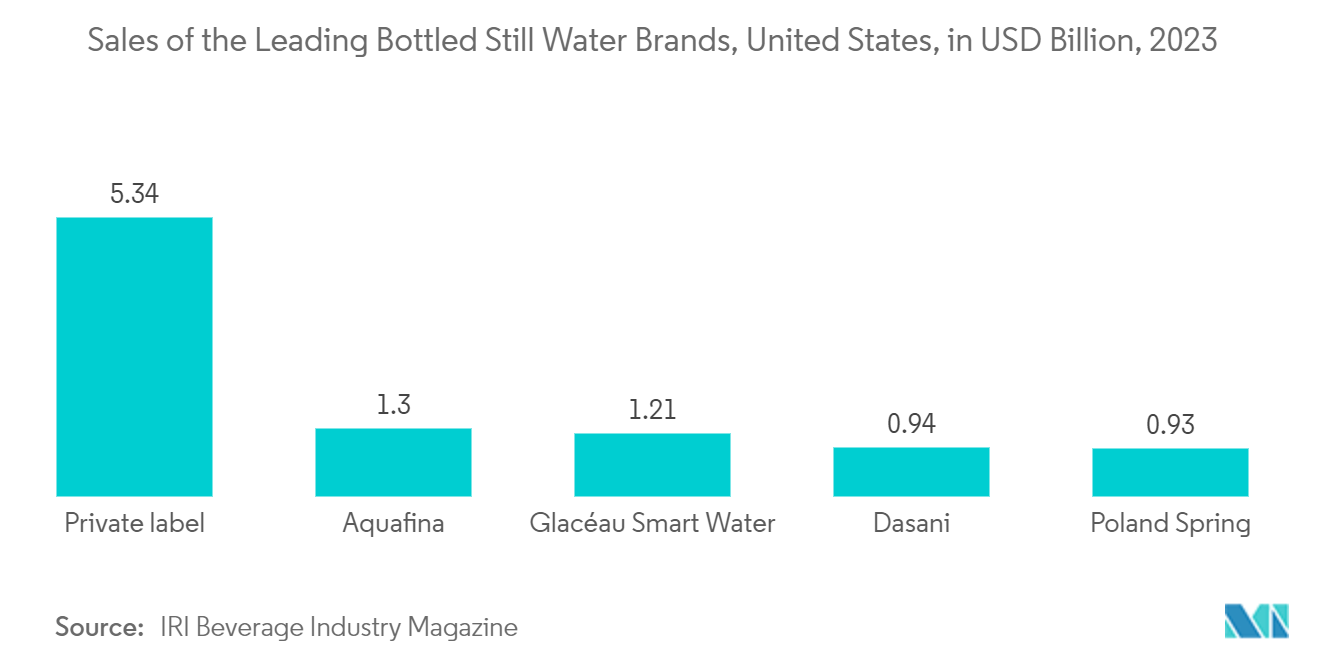Market Trends of United States Beverage Contract Bottling And Filling Industry
Beer is Expected to Hold Significant Share
- Beer is the most favored alcoholic beverage in the United States. The majority of U.S. consumers showed a preference for a light beer. In contrast to regular beer, this variety has reduced alcohol content and calories. Small and independent breweries continue to be critical contributors to significant communities across the country, finding new ways to innovate and thrive amid evolving consumer preferences and a competitive and maturing beverage market.
- As brewers first launch their operations or begin to grow larger, they can either buy their filling machines or opt for rented filling lines or contract filling solutions. Finding the right filling machinery was complex and could cause significant trouble for beer companies.
- Different filling machines could handle different liquid viscosities, whereas beer has varying filling requirements depending on viscosity and packaging. For these reasons, many companies in the United States are opting for contract bottling and filling, which significantly helps the companies to provide maximum efficiency in bottling and packing.
- In 2023, U.S. beer production and imports collectively dipped by 5%. Concurrently, craft brewer volume sales saw a 1% decline, propelling the market share of small and independent brewers to 13.3%, according to the Brewers Association. The return of beer volume from packaged sales to bars and restaurants was the main factor in the larger dollar sales increase.

Bottled Water is Expected to Witness Significant Growth
- Bottled water is the fastest-growing drink choice in the United States, and Americans spend billions of dollars each year to buy it (Beverage Marketing Corporation). IBWA claimed that bottled water is the healthiest packaged beverage and is particularly crucial as the United States is faced with increased rates of obesity and diabetes. Despite continued growth and increased consumption, bottled water uses the least amount of water and energy of any packaged beverage. One liter of finished product requires only 1.39 liters of water and 0.21 megajoules of energy on average. It is critical in disaster relief. Furthermore, it can only be available in times of emergency if the industry is strong and viable all year.
- The Federal Emergency Management Agency (FEMA) recommends that one should have a minimum of 1 gallon of water per person within a day available for emergencies. Buying and storing bottled water is a safe and convenient way to ensure an adequate supply is available when needed, and this is expected to boost the demand for bottled water, which, in turn, is expected to positively impact the contract bottling and filling market in the United States.
- According to data published in May 2024 by the International Bottled Water Association, 15.94 billion gallons of bottled water were sold in the United States in 2023. Over the last few years, the country's bottled water sales volume has increased each year significantly.
- Furthermore, the US Food and Drug Administration regulates bottled water as a food product. The FDA does not require bottled water companies to use or report water quality testing results from certified laboratories. The FDA does require ingredient and nutritional information on bottled water labels.
- Recently, Nestlé considered selling most of its bottled water operations in the United States. That business accounts for a significant share of the Swiss food giant's sales and has drawn criticism from environmental groups. Environmental activists regard bottled water as inherently wasteful, at least in countries with drinkable tap water, because of the energy required to transport it to the store. Instances such as this may negatively affect the bottled water contract bottling and filling market in the country.



